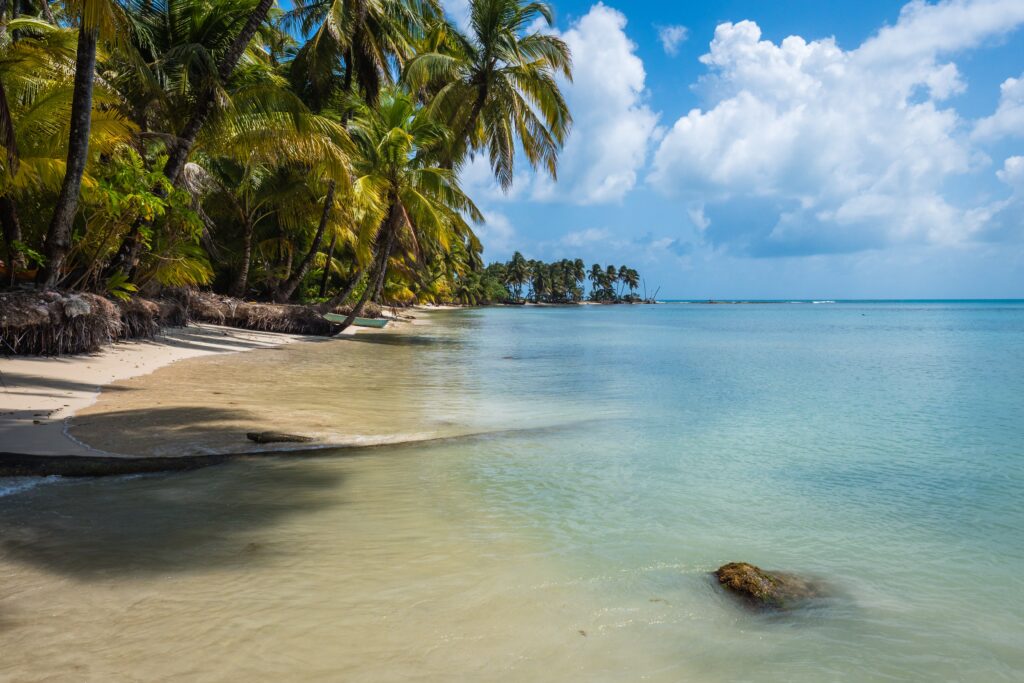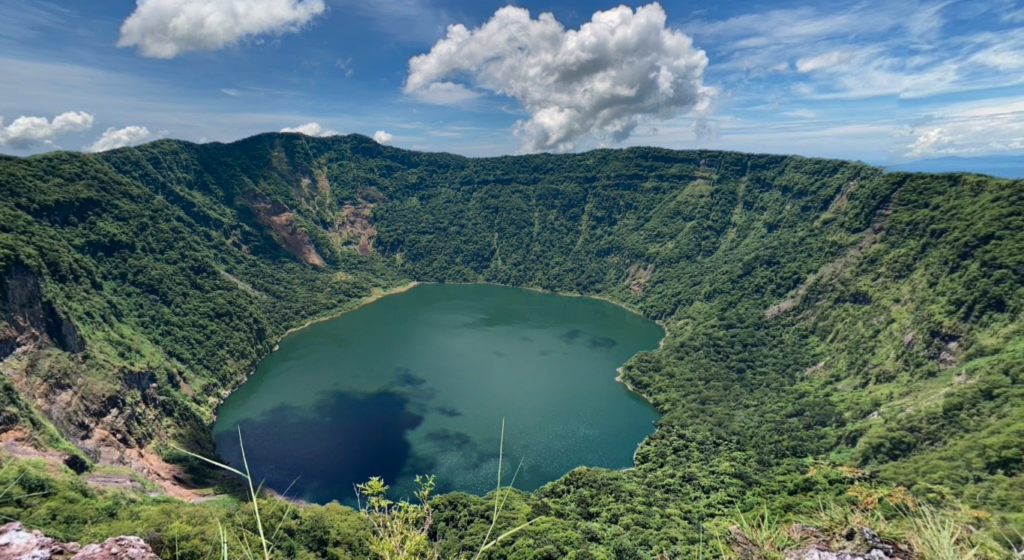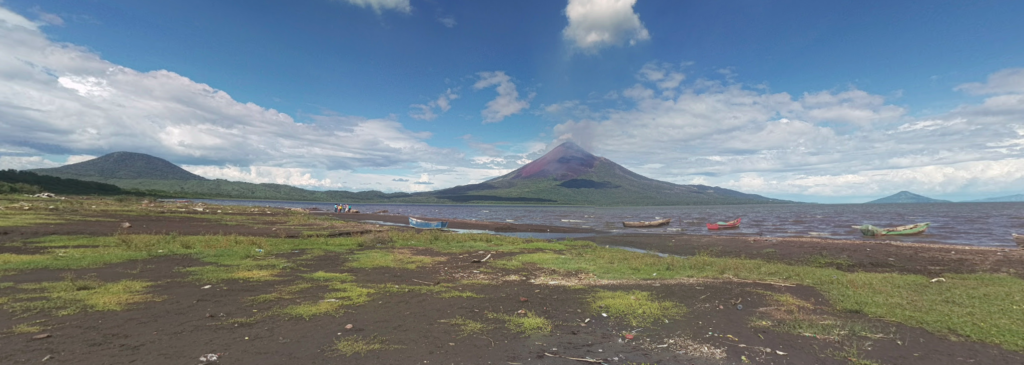Nicaragua / Republic of Nicaragua / República de Nicaragua – Let’s explore here

What’s it like in Nicaragua?
Nicaragua is a country in central America, about the same size as England, UK. The Amerrisque Mountains lie as the central spine of Nicaragua, just a few miles from the Caribbean. The highest point is Mount Mogotón, at 6,841 ft (2,085 m) above sea level.
The low plains of the Atlantic Coast contain rainforest and are 60 miles (97 km) wide in areas. On the Pacific side of Nicaragua are the two largest fresh water lakes in Central America—Lake Managua and Lake Nicaragua. Western Nicaragua contains 40 volcanoes, many of which are still active.
Nicaragua’s population is around 6½ million people (2023) and its capital, Managua is home to almost 1½ million.

A. bit about the history of Nicaragua
Pre Columbian and Early Exploration
Before European arrival, Nicaragua was inhabited by various indigenous groups, including the Nahua, Chorotega and Miskito peoples. Christopher Columbus arrived on the Caribbean coast in 1502, and the Spanish began their exploration and colonisation in the early 16th century.
Spanish Colonisation
In the early 1520s, Spanish conquistador Francisco Hernández de Córdoba established the first Spanish settlements in Nicaragua. The indigenous population suffered greatly due to warfare, disease and forced labour under Spanish rule. Nicaragua became part of the Captaincy General of Guatemala, which was under Spanish control.
Independence from Spain
Nicaragua gained independence from Spain on 15 September 1821, alongside other central American countries. Initially, it was part of the Mexican Empire, but after the fall of the empire, Nicaragua joined the Federal Republic of Central America in 1823. This federation dissolved in 1838, and Nicaragua became an independent republic.
The 19th Century and Political Instability
The 19th century was marked by political instability, with frequent conflicts between liberal and conservative factions. The rivalry between political parties led to civil wars and foreign interventions, especially from the United States, which had interests in the region due to its strategic location.
US Influence and the Canal Project
In the late 19th and early 20th centuries, the United States played a significant role in Nicaragua’s political and economic affairs. The idea of constructing a canal through Nicaragua was proposed but never realised. However, the US intervened militarily in the country during the early 20th century, particularly during the presidency of the Somoza family.
The Somoza Dictatorship
From 1936 to 1979, Nicaragua was ruled by the Somoza family, first under Anastasio Somoza García, followed by his sons Anastasio Somoza Debayle and Luis Somoza Debayle. The Somozas maintained power through corruption, repression, and strong US support. Their regime faced growing opposition, especially from left wing groups.
The Sandinista Revolution
In 1979, the Sandinista National Liberation Front (FSLN), a leftist revolutionary group, overthrew the Somoza dictatorship. The revolution was supported by a broad coalition, including urban workers and peasants. The Sandinistas implemented social reforms, including land redistribution and healthcare improvements, but also faced resistance from conservative sectors and the United States.
The Contra War
During the 1980s, the United States, under President Ronald Reagan, supported the Contra rebels, a group of counter revolutionary fighters opposed to the Sandinista government. This led to a brutal civil war, which resulted in thousands of deaths and widespread destruction. The US also imposed economic sanctions on Nicaragua during this period.
Return to Democracy
In 1990, after years of civil war, elections were held in Nicaragua, and the Sandinistas were defeated. Violeta Chamorro, a candidate from the opposition, became president. Over the next few decades, Nicaragua transitioned to a more stable, democratic system, though the country continued to face challenges such as poverty, corruption and economic difficulties.
The Ortega Presidency
In 2007, Daniel Ortega, leader of the Sandinista National Liberation Front, returned to power after winning the presidential election. His government has been marked by both social programmes and controversial policies, including criticisms of authoritarianism and the suppression of political opposition. Ortega was re-elected in 2011 and 2016, maintaining significant control over the country’s political landscape.
Recent Challenges
Nicaragua has faced significant political and social unrest in recent years. In 2018, large scale protests erupted against Ortega’s government, leading to violent repression and a crackdown on opposition groups. The political climate remains tense, with ongoing concerns over human rights, democratic freedoms and the country’s economic future.

Nicaragua road trip
Our Nicaraguan road trip is part of a much larger North American road trip.
Our planned Nicaraguan road trip takes us from Honduras, heading towards the capital, Managua, before moving on to Costa Rica.
No doubt we’ll explore the country much more than this continent-spanning short route shows, in particular checking more of the coast and inland Nicaragua.
Hopefully our journey will improve our knowledge of this intriguing and beautiful country, and enable us to meet some interesting people. We’ll be updating this page at that time – don’t forget to check back 🙂
Map of our road trip through El Salvador

What’s it like to drive in Nicaragua?
We’ve also created a dedicated page to driving abroad, which you might find helpful 🙂
What currency do they use in Nicaragua?
In Nicaragua they use the Cordoba. Cash is widely used. The use of credit / debit cards is widely accepted in cities, although not in rural areas. Traveller’s cheques are not generally accepted. There are many ATMs in cities, although not all accept foreign issued cards.
You should make yourself aware of the amount that your bank charges you for using credit and debit cards abroad. Often credit cards are cheaper for purchasing items directly, and for withdrawing cash from ATMs.
What language do they speak in Nicaragua?
They speak Spanish in Nicaragua. English is also spoken in major cities and tourist areas.
What time zone is Nicaragua in?
Remember, when you’re planning your next trip to take a look at what time zone it’s in.
Do I need a visa to visit Nicaragua?
We’ve created a dedicated, more comprehensive page on visas, which you should find helpful. Check it out!
Is wild camping legal in Nicaragua?
Yes, wild camping is fine in Nicaragua, although make sure the land is not private or being used for the cultivation of narcotics.
What plug / socket type do they use in Nicaragua?
In Nicaragua they use plug / socket types A and B.


Health issues in Nicaragua
Is it safe to drink water in Nicaragua?
Yes, it is safe to drink tap water in Nicaragua, although in some rural areas it is not safe to do so. Bottled water is also readily available across the country.
What vaccinations are required for Nicaragua?
This NHS website is kept up to date with all relevant information on vaccinations in Nicaragua.
Phones in Nicaragua
What is the country calling code for Nicaragua?
The country calling code for Nicaragua is +505
What are the emergency phone numbers in Nicaragua?
- The emergency number for police in Nicaragua is: 118
- In Nicaragua, the emergency number for ambulance is: 128
- The emergency number for fire in Nicaragua is: 115 / 911
If you’ve got some useful info that you’d like to share, let us know!
And don’t forget to check out all the other pictures!
